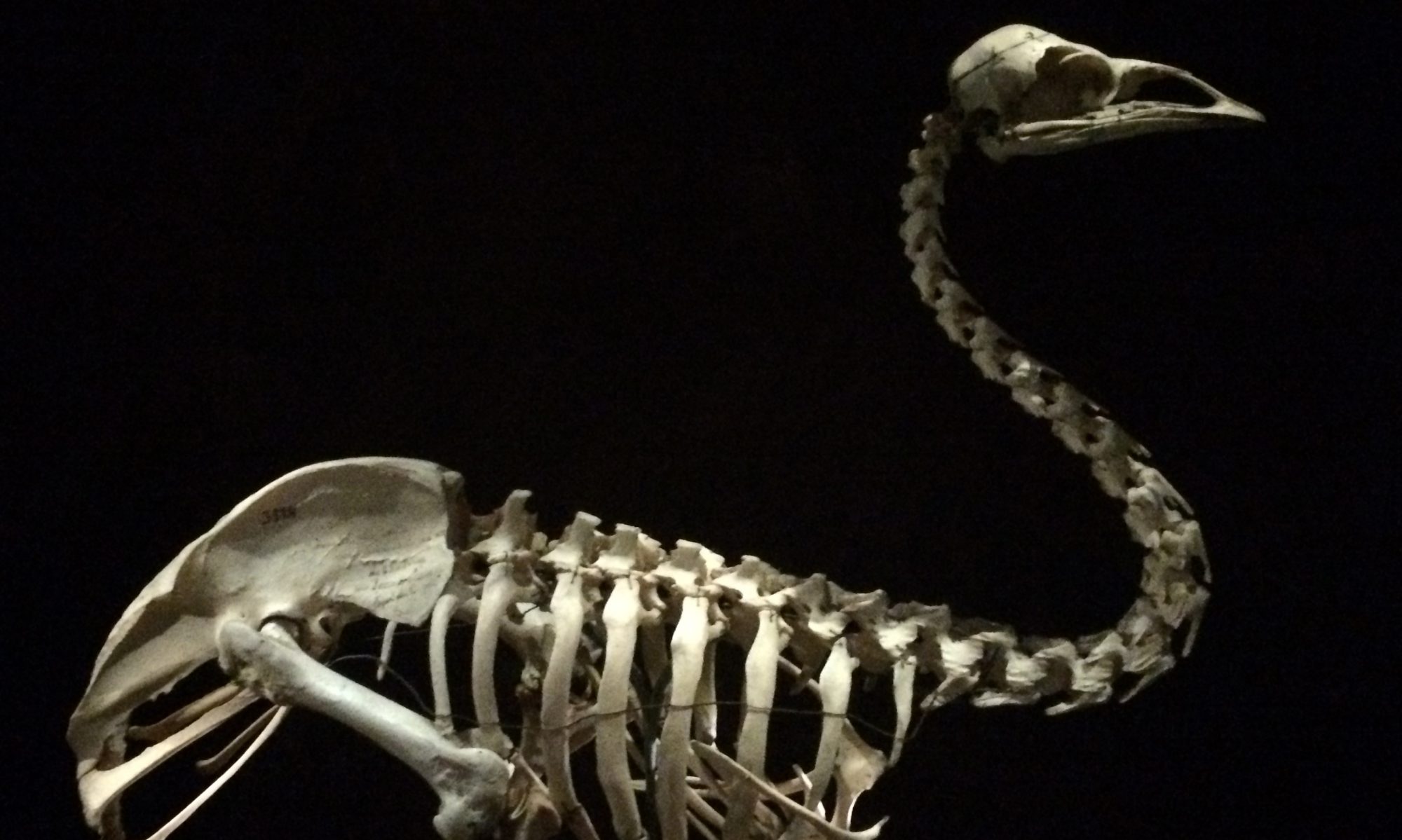The Beyond Dodos and Dinosaurs project was involved in a 5-day PhD level course titled “Museums and Environmental Humanities: A Master Class” held in Stavanger, Norway, in August 2019. Each day featured a lecture, a master class with student presentations of an object from their research, and a visit to a local museum. Museum personnel were involved throughout and curators participated in the discussion sections with the students.
PI Dolly Jørgensen gave the Day 1 lecture “Portraits of extinction: Encountering extinction narratives in natural history museums”. That day the students got to explore the Stavanger Museum and its collection of natural history specimens, including an extinct tiger sub-species.

Students exploring the gallery 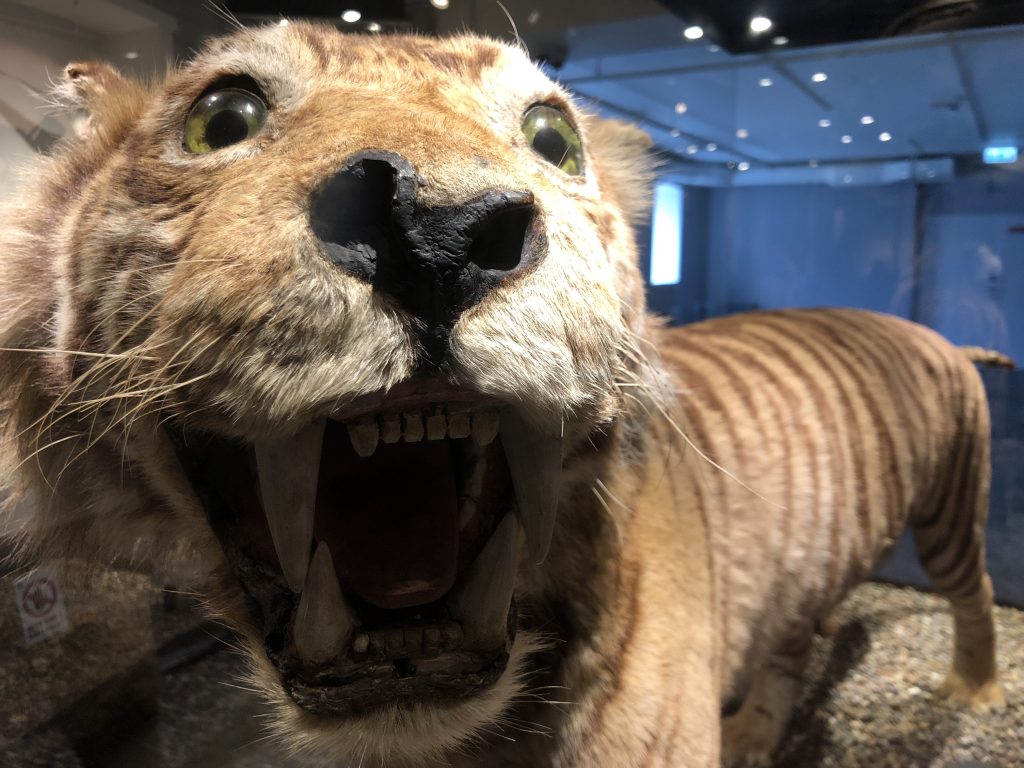
The Javanese tiger
On Day 2, Henry McGhie, who was previously at the Manchester Museum and organized our Extinction as Cultural Heritage project kick-off meeting there, spoke on Day 2 on “The role(s) of museums in a changing climate”. We visited the Norwegian Petroleum Museum and their new Climate for Change exhibit.
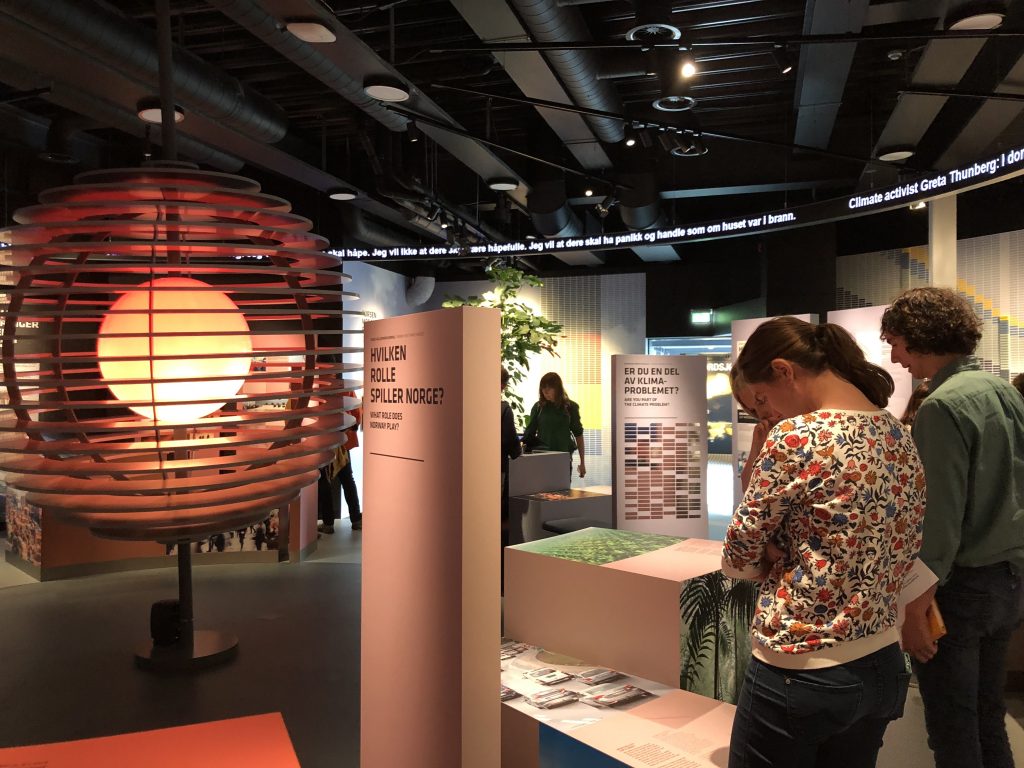
Exploring the local and global causes and consequences of climate change 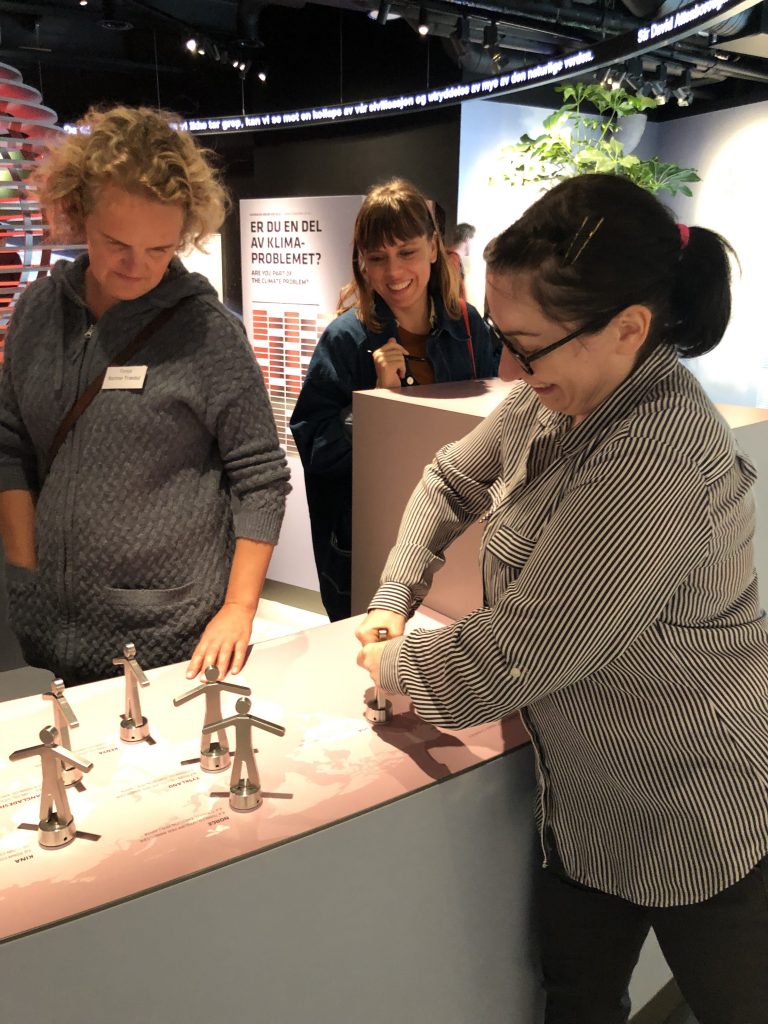
Seeing how “heavy” the carbon footprint of different people are
Day 3 featured a lecture “The Anthropocene: a new epoch to think with in museums” by Beyond Dodos and Dinosaurs advisory board member Libby Robin. One of the student presentations that day even featured extinction–Anna-Katharina Laboissière presented her idea “The good death: reframing extinction?” The group visited the Flora: Between People and Plants special exhibit at the Stavanger Art Museum
We were out at Vitengarden in the countryside on Day 4. Brita Brenna from University of Oslo talked on “The naturecultures of fieldwork in the Arctic” and the students got to explore naturecultures of the fields of Jæren in the agricultural collections.
The final day started with another Beyond Dodos and Dinosaurs advisory board member: Karen Rader gave her lecture on “Thoughts in Things: a history of science perspective on museums in transition”. The visit that day involved two museums: The Norwegian Canning Museum and the Maritime Museum.
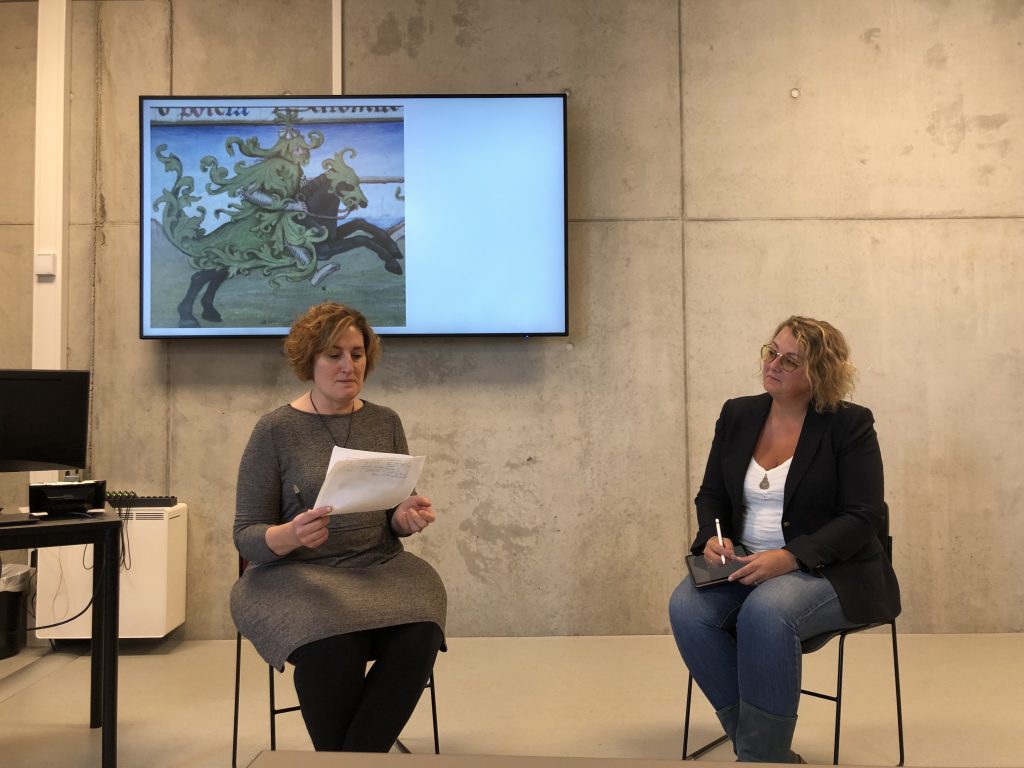
The master class session with lecturer Karen Rader and student Anne Mette Seines 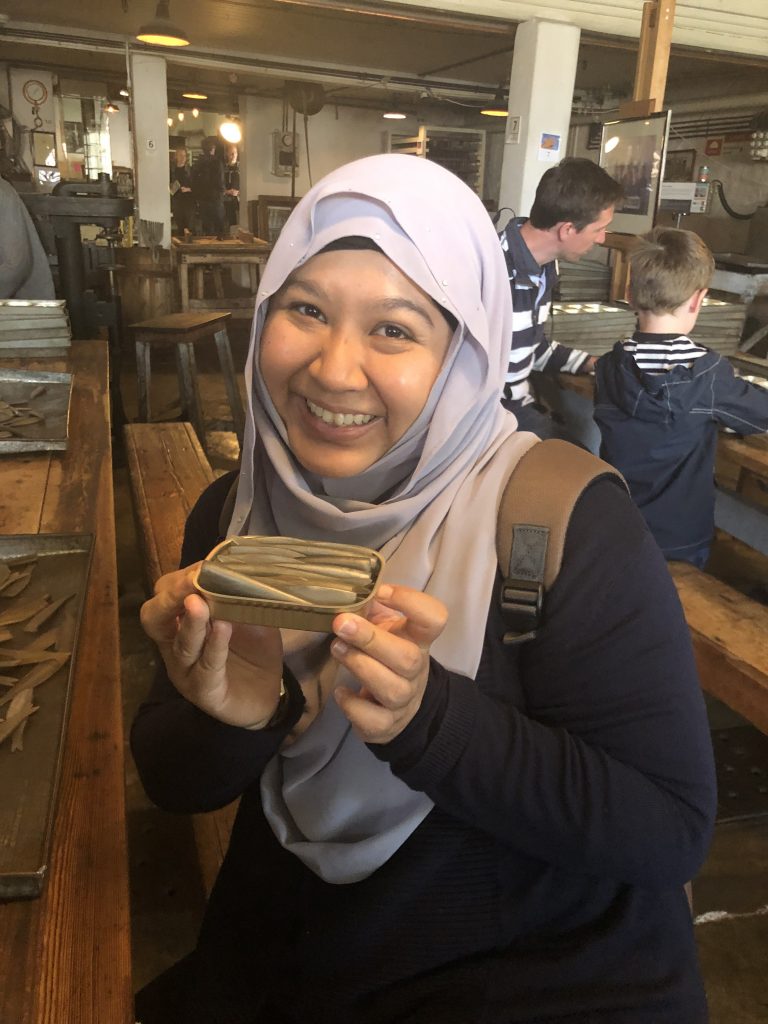
Great sardine packing job by Faizah Zakaria at the Canning Museum
This event showed the fruitfulness of using environmental humanities approaches when thinking about how to display and interpret objects and social concerns.
